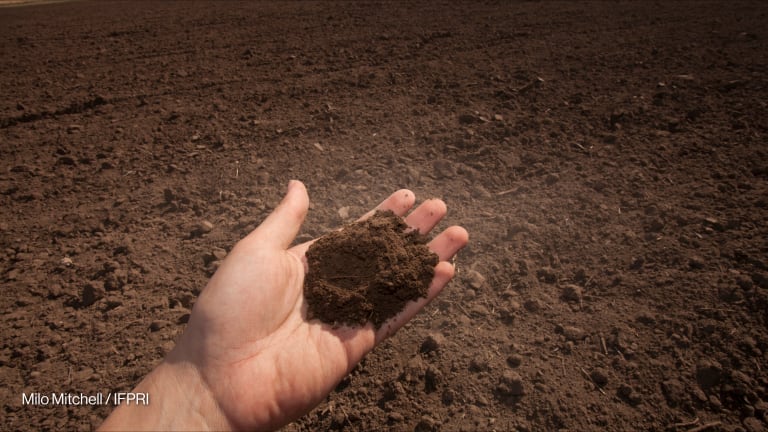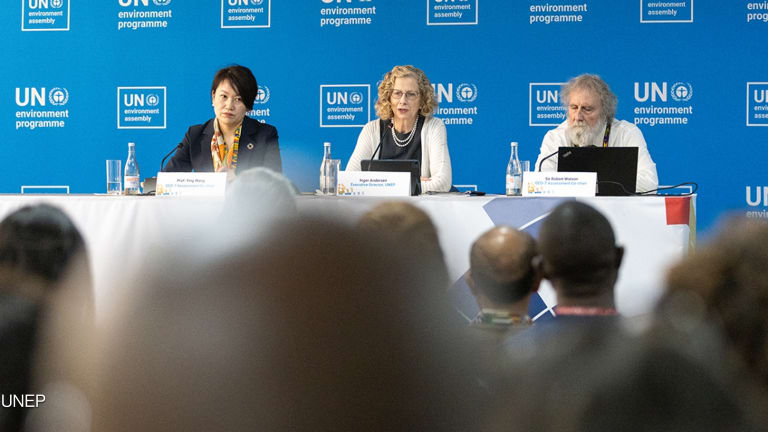
This year, the world marked the 75th anniversary of the United Nations in the midst of global calamity and uncertainty of an unprecedented scale. Yet we were also reminded that throughout history, great crises give rise to extraordinary opportunities.
The COVID-19 pandemic is the crisis of our time. It has extinguished over 1 million lives in nine months and triggered the deepest economic recession since World War II. Yet this tragedy offers a pathway to a new, more promising future. If we commit to building back better and more sustainably. If we overcome our collective paralysis of inaction. If we grasp each opportunity for action, in the coming year, as a moment to chart a new course.
Breaking the paralysis of inaction
According to the World Economic Forum, investing in a nature-friendly economy could generate more than $10 trillion in annual business opportunities and 395 million jobs by 2030. This would certainly move us closer to achieving the Sustainable Development Goals.
So, why the delay? Our prevarication was already too much for young people. For nearly a year, until just before COVID-19 hit, they abandoned their Friday classes to protest and demand action.
It was the worldwide lockdowns during COVID-19, tragic as they were, that offered to all of us an unexpected, passing glimpse of a greener, brighter alternate reality. The lockdown disrupted consumption and travel habits, and globally carbon emission levels plunged by up to 17%. For a surreal moment in time, we witnessed the potential but concrete impacts of drastic cuts to fossil fuel use and overconsumption. The color of the sky in some cities transformed, literally.
The Climate Finance Challenge: A Devex Pro special report
Should oil companies receive climate finance? The Climate Finance Challenge report asks what financing is needed to achieve global climate goals, including insights into the data and key players.
Plummeting energy use also meant that for a short period, some high-income economies could have relied wholly upon sustainable energy.
We stand at a pivotal point in our history. Prevarication is no longer an option. Returning to business as usual is not an option either. We must seize the opportunity to lock in a greener, more sustainable, and more equal recovery.
The roads to the U.N. Biodiversity Conference in May 2021, followed by the U.N. Climate Change Conference in November — postponed from this year — and the U.N. desertification conference in December offer a rare window of opportunity for world leaders to pledge real action for nature. They can deliver and align bold green recovery plans in all regions.
Call for action on living lands
At a recent meeting of Commonwealth ministers rallying around sustainable land use, we started to see this momentum building. The Commonwealth Heads of Government Meeting, planned for mid-2021, could galvanize commitments and provide just the impetus needed.
Land use change is a leading cause of increasing zoonotic diseases, such as COVID-19. Early action on managing land use is also critical for achieving the Paris Agreement on climate change because land is both a major source and sink for carbon emissions.
The land use sector is responsible for over 18% of net carbon emissions through human activities such as uncontrolled logging and unsustainable soil management. Restoring billions of hectares of degraded and degrading land could take out huge amounts of the excess carbon that would otherwise be left in the atmosphere. The world’s forests, for instance, absorb a net 6 gigatonnes of carbon dioxide per year, equivalent to the annual greenhouse gas emissions of the United States.
Let’s seize this potential before the negative impacts of climate change weaken the resilience of the land and the people who depend on it still further. Extreme weather, drought and floods, degrade the soil, forests, and wildlife. The combination of climate change and land degradation could decimate crop yields and force millions of young people to migrate from rural areas.
The powerful positive examples the ministers shared, of the nature-based solutions that can simultaneously reverse land degradation, biodiversity loss, and climate change, also demonstrated the potential for rapid COVID-19 recovery.
Pakistan’s Billion Tree Tsunami Project restored more than 600,000 hectares of forests and employed half a million people. Since the COVID-19 pandemic broke out, the government has created 84,000 new jobs for unemployed youth to plant trees and nurseries, as part of the “10 Billion Tree Tsunami - Plant4Pakistan” follow-up program.
Sierra Leone has created nearly 10,000 jobs for young people in rural communities by planting 1.2 million of the 5 million trees it pledged to plant by 2024. In Rwanda, when an estimated 3.5% decline in agricultural gross domestic product was linked to land degradation, the government set about holding countrywide, community-led tree-planting programs. So far, more than 700,000 hectares of forest have been restored.
The effort to galvanize political backing around an urgent call for action on “living lands” could reap wide-ranging benefits in the areas of climate change and biodiversity. Locking in a post-COVID “green recovery” where the land and the people who live on it truly flourish will fire up sustainable growth that is forward-thinking and inclusive. A green recovery is wholly possible, once we start trusting and investing in nature.









